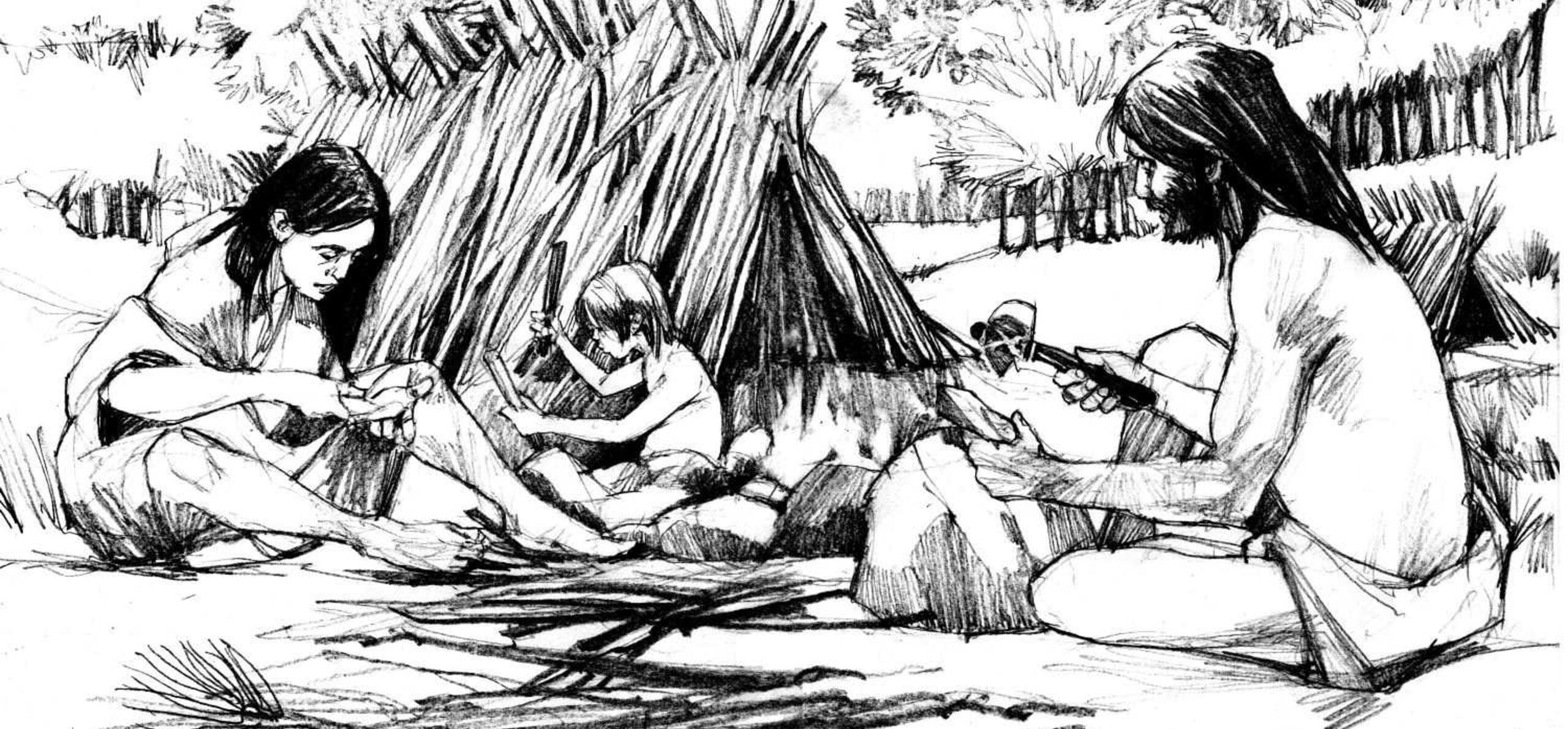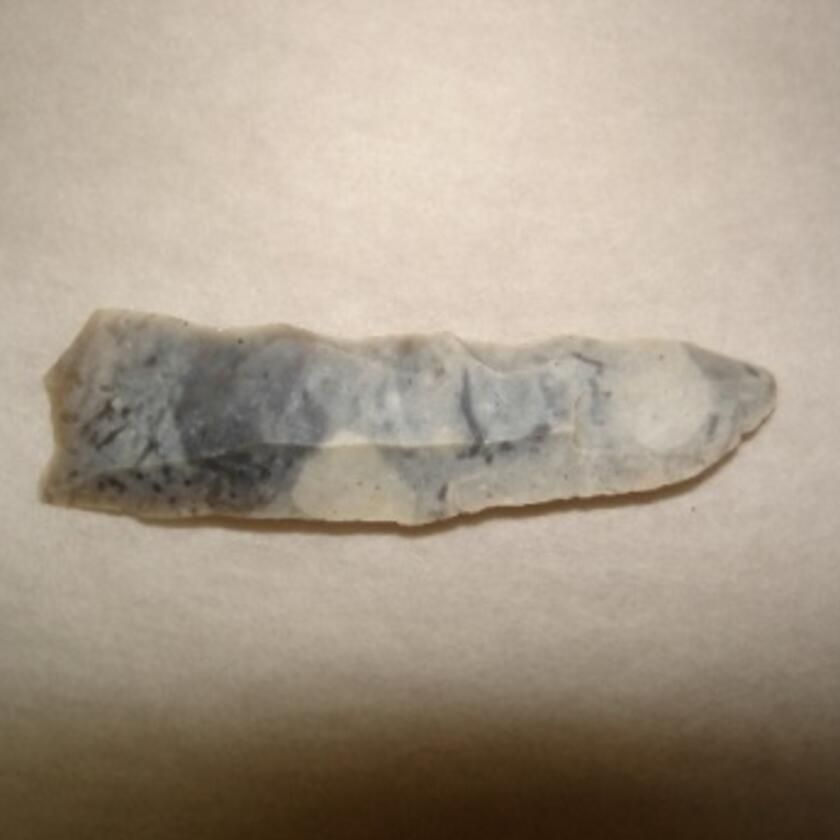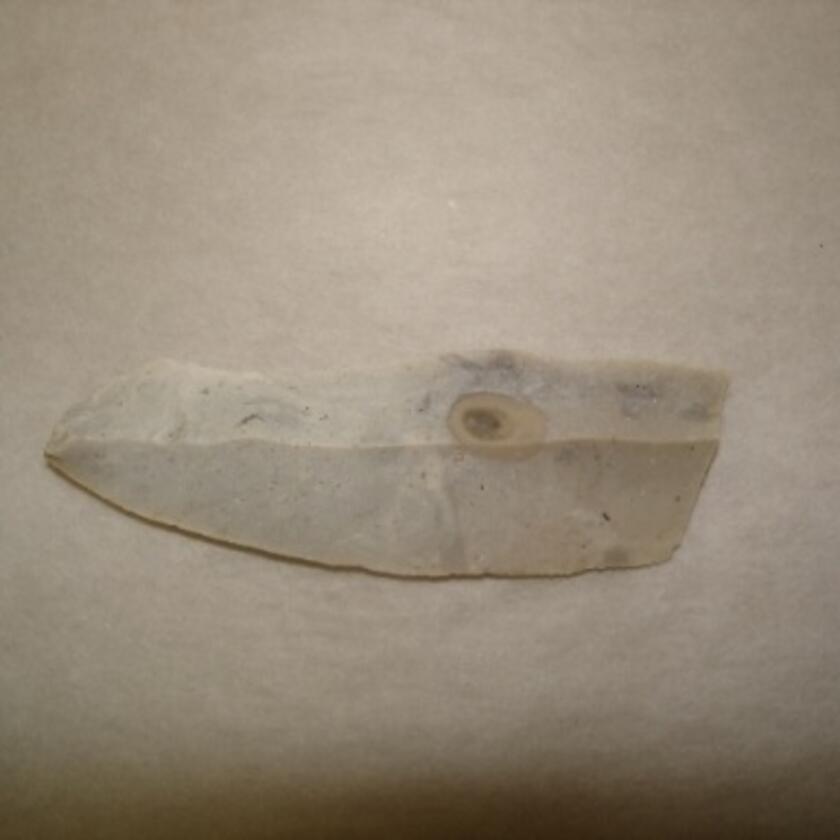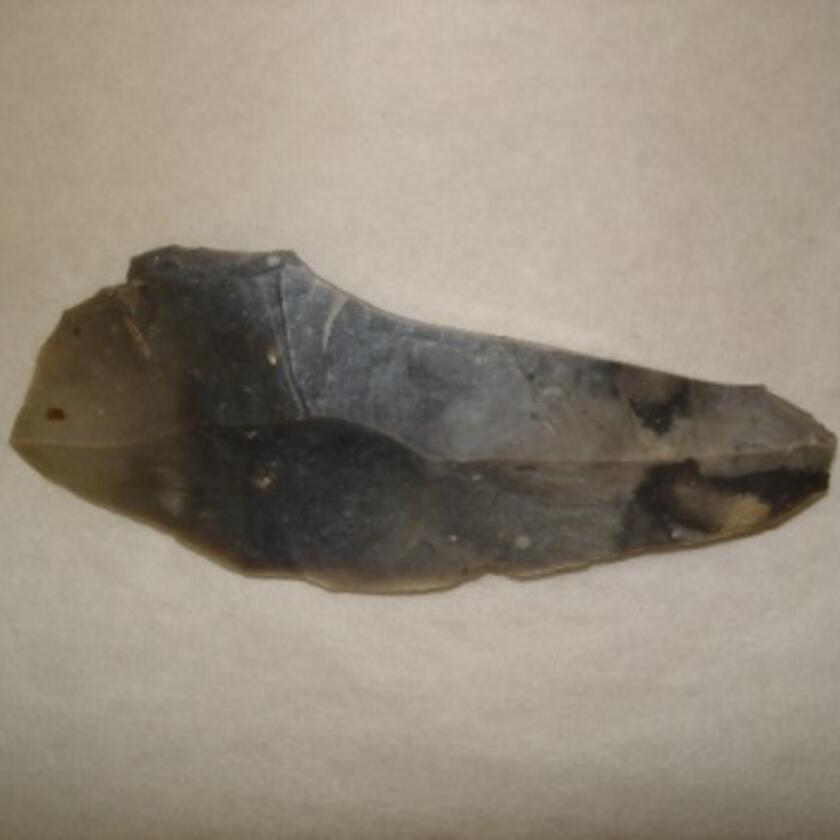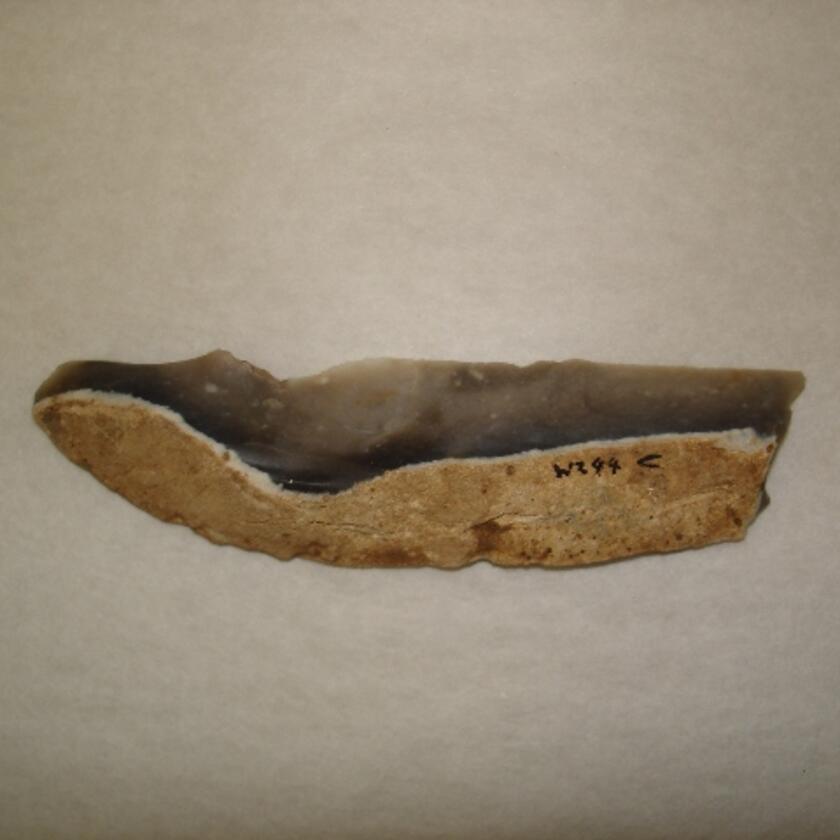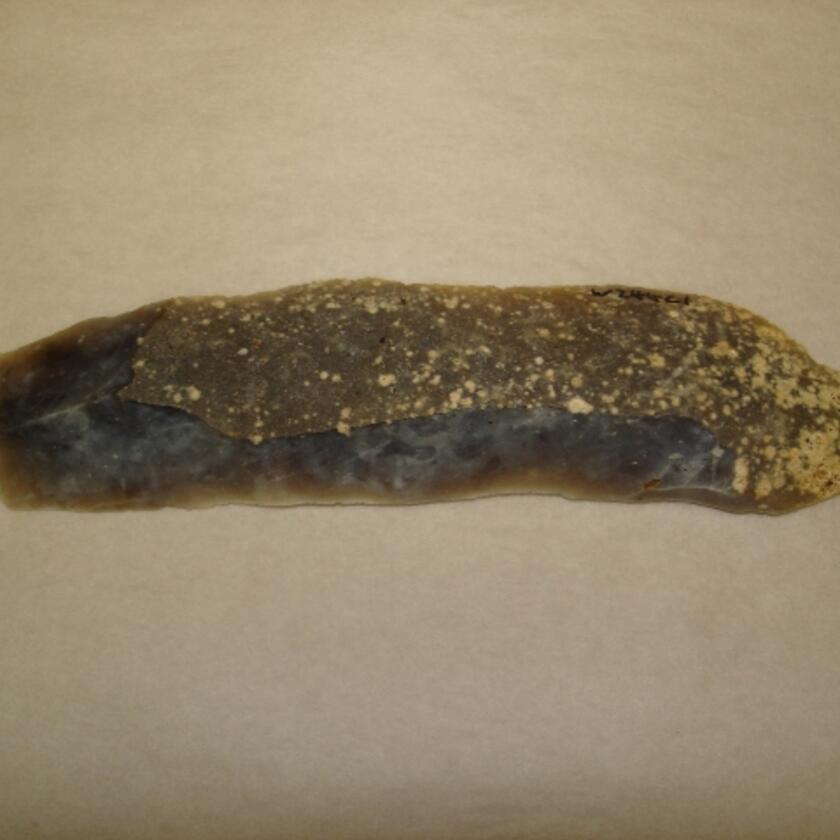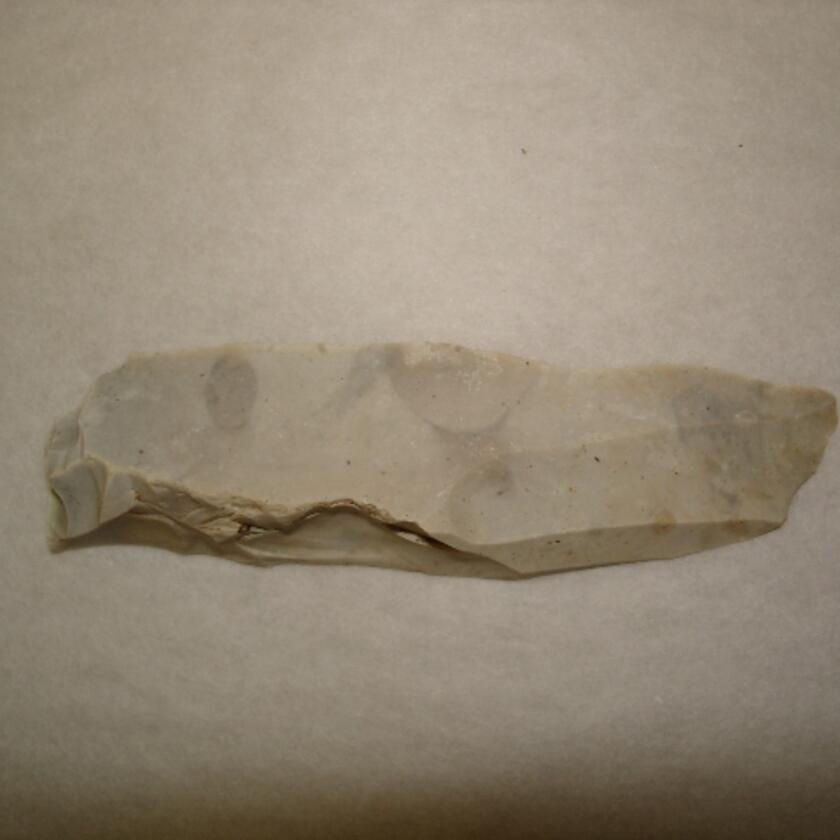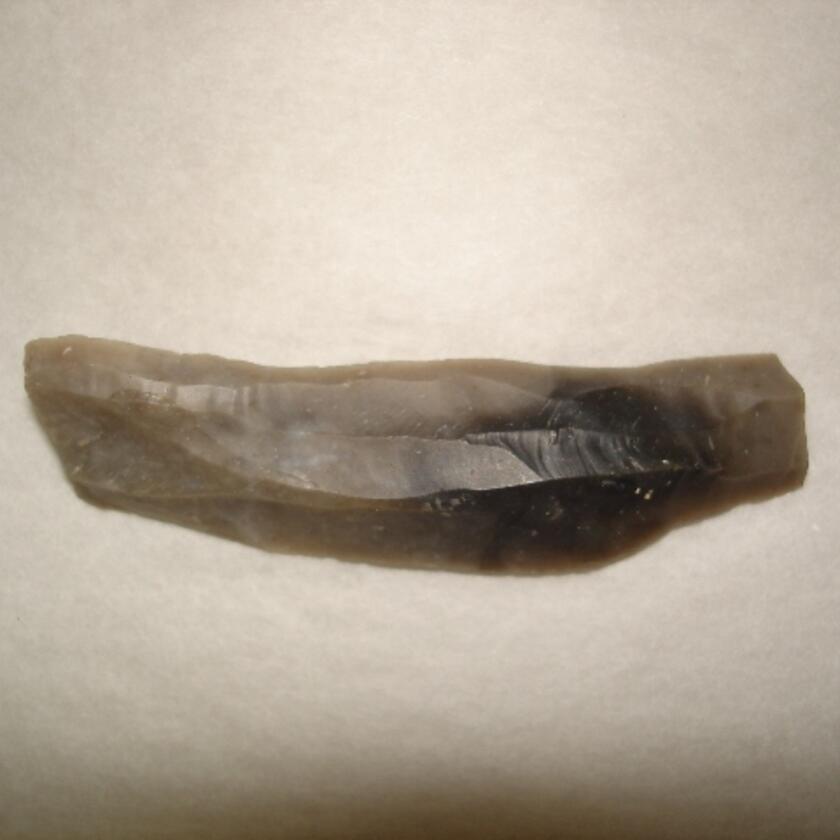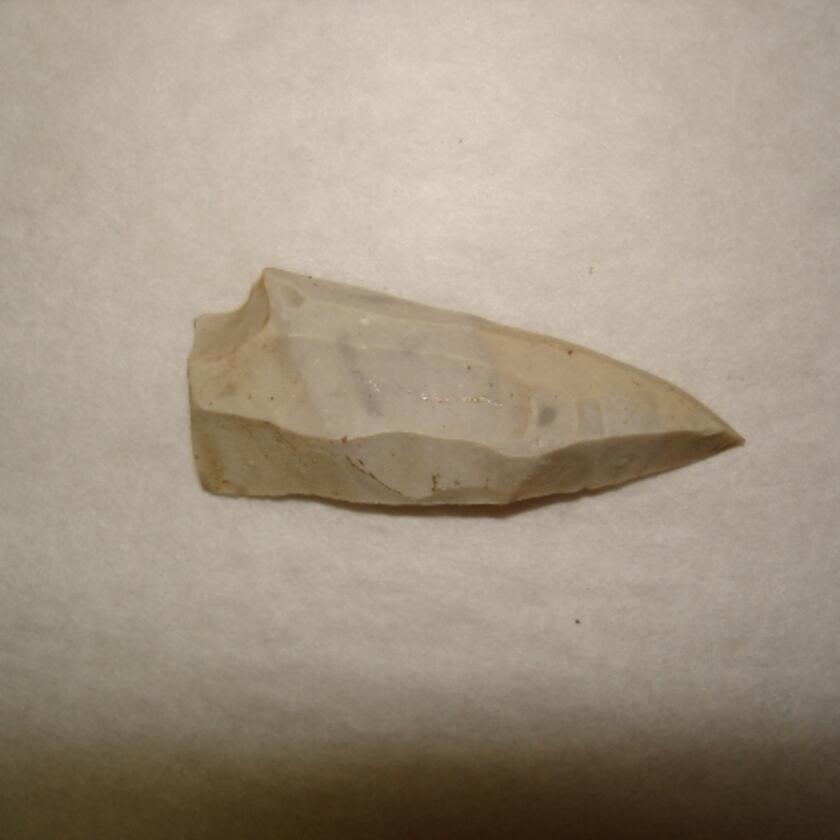What brought the earliest people to Reading and what might life have been like for them? Discover more about the earliest human inhabitants of Reading during the early to middle Stone Age Period, including where they lived, what they ate, the technology they used to hunt and prepare food, and what the prehistoric landscape they lived in was like.
What is prehistory?
Prehistory is the time before written records exist. In Britain, this predates the Roman invasion of AD 43. It's usually divided into three stages: the Stone Age, Bronze Age and Iron Age.
The earliest prehistoric period is the Stone Age. In Britain, this dates from around 850,000 to 950,000 years ago, up until the introduction of bronze at around 3,300 BCE. This time period covers 99% of our human technological history!
This was a time when stone was the dominant raw material used by humans to manufacture their tools and weapons. Other material such as bone, antler and wood also would have been used, but these do not tend to survive as well in the archaeological record. In the absence of written evidence, archaeology is used to tell the story of prehistoric Britain. This involves the examination of artefacts, organic remains and landscapes to imagine what life may have been like.
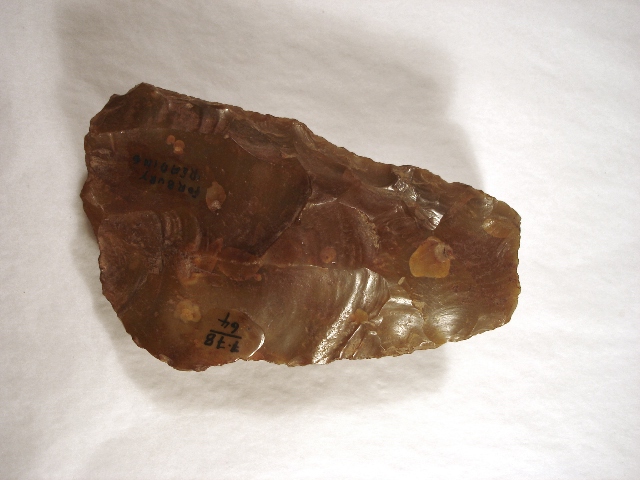
Palaeolithic handaxe found in the Forbury Gardens, Reading (REDMG : 1978.7.64)
Human activity in Reading
The earliest inhabitants of Reading were attracted to the natural geology of the region, which consisted of a three-foot high, four-mile long gravel ridge bisected by the River Kennet, where it then joined the Thames. This is best seen today through the steep decline of the road to Caversham (via Reading Bridge) under the embanked railway.
People were attracted to the dry river terraces above the flood levels and the good access to water supplies, food and raw material for manufacturing tools.
Most of the earliest evidence for settlement is found on the outskirts of the modern town centre at sites such as Green Park, Reading Business Park and Caversham. The vast amount of stone artefacts discovered by archaeologists is evidence of these early people.
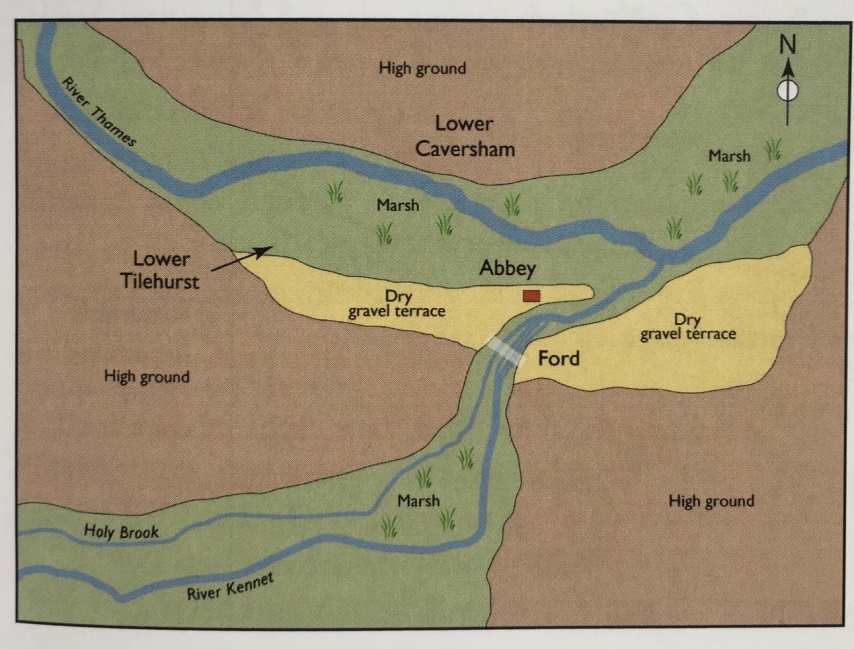
The site of Reading on gravel terrace above the River Kennet (map from J. Dils book Reading: A History, 2019, based on a map in M. Hinton, A History of the Town of Reading, 1954)
At this time, and until the end of the last Ice Age, around 12,000 years ago, Britain was connected to the continent via a land bridge called Doggerland, which slowly submerged under the sea at around 7,000 BC. People crossed in and out of Britain following migrating herds of cold-adapted animals, such as mammoths, to hunt for food.
The oldest objects made by humans are stone tools. Humans produced flint hand axes, scrapers and knives and other tools during the Palaeolithic period (or Old Stone Age). Palaeolithic flint tools have been found in Pleistocene gravels of the Thames and Kennet river terrace deposits, in areas such as Caversham and Tilehurst.
A river terrace is a level extending along the side of a valley which indicates where a river used to flow. These stone objects could be evidence of the earliest human activity in Reading, or they could simply have been washed down river from other areas further along the Kennet and Thames rivers.
These earliest artefacts include stone tools, predominantly handaxes. Handaxes were multipurpose tools used for butchering animals, digging for plants and edible roots and for chopping wood.
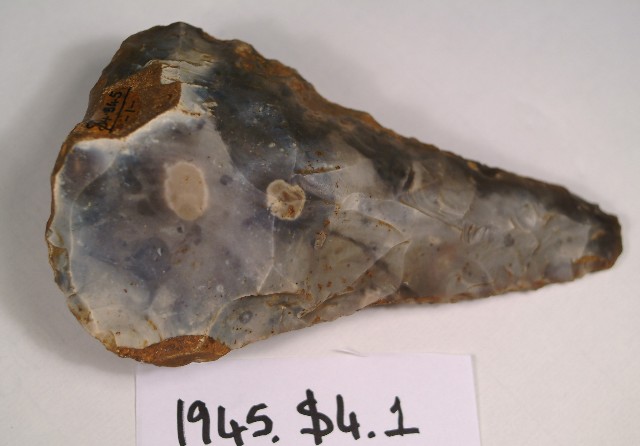
Palaeolithic Handaxe, from Caversham Hill. (REDMG : 1945.$4.1)
Handaxes like this one can sometimes be dated with reference to the river terrace level in which they are found. This handaxe was found at Caversham Hill, probably in a trench dug for water drainage on Albert Road, in 1890. Albert Road is at the level of the Boyn Hill river terrace, dated to around 400,000 years ago. But since the handaxe was most likely discarded on the surface of the ground after the terrace had formed, it could be younger in age.
Middle and Upper Palaeolithic (middle and upper Stone Age) material is rarely found in the Thames Valley, but there is one bout coupe handaxe, a technology associated with the Neanderthal Mousterian industry of the Middle Palaeolithic, from Maidenhead.
Evidence of human settlement in the Reading area is not seen until the Mesolithic period (or middle Stone Age) at the end of the last Ice Age. The warmer more stable climate brought about changes in the fauna and flora such as the appearance of heavily wooded forests and the introduction of smaller warmer climate animals like deer, boar and hares. In response to these changes people had to adapt the way they lived, hunted and the technology they used.
This saw the introduction of smaller and more specialised tools and weapons such as projectiles for spears and arrow heads, miniature scrapers and knives used to hunt and butcher animals. Tiny flint blades called microliths were used to form the points of hunting weapons, such as spears and arrows. Microliths were often combined with wood, bone, resin and fibre to form composite tools or weapon such as harpoons for catching fish.
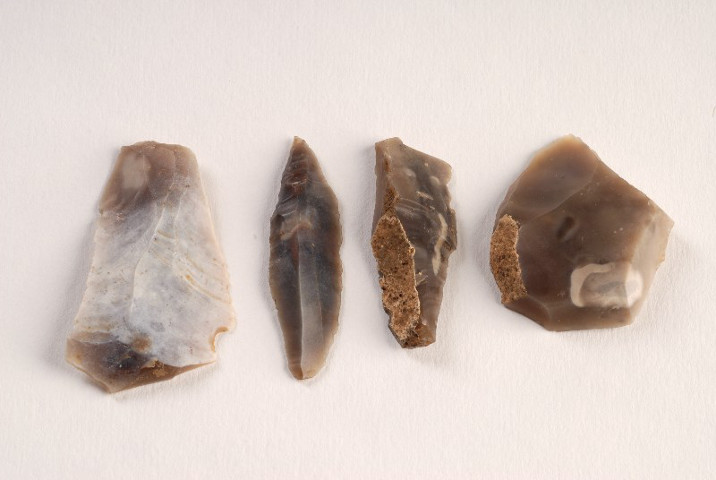
Pointed flint microlith, second from the left, with three of the flakes associated with it, found near Chapel Hill in Tilehurst (REDMG : 1963.109.2)
Thatcham (14 miles west of Reading) is the second richest Mesolithic site in Britain for its wealth of lithic (stone) material and environmental evidence. It has provided the earliest date of post-glacial settlement in North Western Europe of approximately 9100 years ago. The first recorded excavations to be carried out on the site close to the River Kennet were under the direction of John Wymer and other staff from Reading Museum between 1958 and 1961. The excavation unearthed 754 finished stone tools, including 285 microliths as well as 132 scapers, 61 gravers, 276 other stone tools, 23 bone tools and other organic remains.
These are just some of the thousands of flint artefacts found on the site. Flint finds from Wymer’s excavation and ones from a later excavation carried out in 1989, prior to the construction of the Thatcham Sewage Works, near the previous excavation site, were analysed. The results suggest that the sites may have been used as home bases in the Kennet valley where a wide range of activities could have taken place, such as processing of plant foods and tool production. The winter evidence may indicate that people were settling here during the winter months to hunt red deer, but more likely the site was visited for a variety of economic and social purposes at all times of the year.
Analysis of the soil and sedimentary sequence as well as the pollen indicates constantly changing localised environments in the early Holocene in the Thatcham area, with sporadic occupation by Mesolithic communities on the drier areas at the edge of the floodplain (extracts taken from the article ‘Excavations of a Mesolithic Site at Thatcham, Berkshire’ in the Proceedings of the Prehistoric Society 2014, Vol. 58, Issue 1). There is also evidence in this area of Bronze, Iron Age and a Roman settlement and it is listed in the Guinness Book of Records as the strongest claimant to being the oldest continuously inhabited place in Britain.
The museum collection houses thousands of these and other stone tools, from all periods of prehistory, discovered in and around the Reading area that help to tell the story of Reading’s first people. An array of Stone Age and other prehistoric objects are on display at the museum in the Green Space Gallery and the Story of Reading Gallery.
You can find out more about the objects featured in this blog and more in the museum collections by visiting our Collections Online website.
